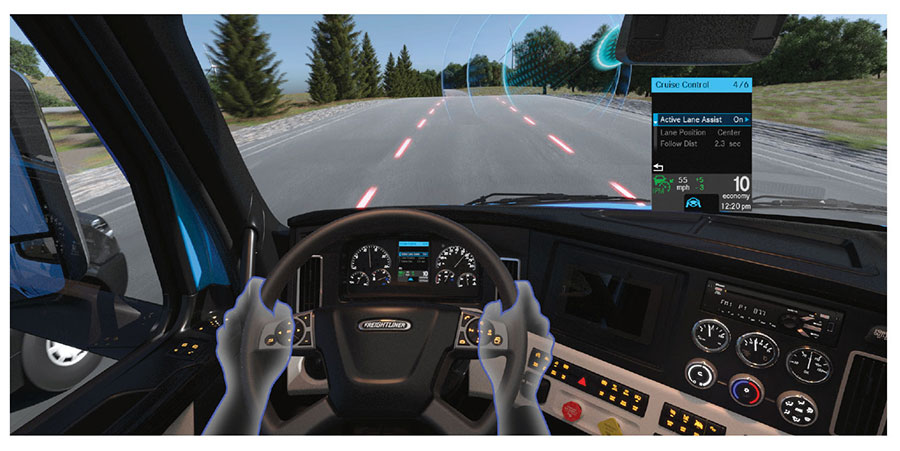Lane-controlling truck tech could slash collision costs: Bosch
Systems that help to keep trucks in their lanes will come at a cost, but they could also generate a significant return on investment.
New research by the component suppliers at Bosch – Safety + Enhanced Driver Comfort: Steering in Commercial Vehicle ADAS Systems – concludes that lateral actuator systems in Class 7 and 8 trucks could reduce overall collision costs by up to four cents per mile, or $3,700 per truck every year.

The findings emerged through a review of public crash data, looking at vehicle types and crash severity.
“The full value when injuries or fatalities from vehicular accidents are avoided is ultimately incalculable,” says Kevin O’Keefe, regional president – automotive steering for Bosch in North America. “Safety technologies like LCA [lane change assistance] and LKS [lane keeping support] help to reduce accidents, which is the ultimate goal across the commercial vehicle industry.”
Bosch researchers conclude that injuries from Class 7 and 8 truck crashes could be reduced by up to 23%, and fatalities could be reduced by up to 19%, based on cases where the trucks were responsible for triggering the collisions.
Lane change assistance and lane keeping support were also projected to reduce property damage by up to 35% in these situations.
Such systems can also support driver comfort by compensating for cross winds, offering active steering damping, and reducing steering effort. Safety features that detect hydraulic failures and add steering assistance could also help drivers maintain control during issues like tire blowouts, Bosch says.
Have your say
This is a moderated forum. Comments will no longer be published unless they are accompanied by a first and last name and a verifiable email address. (Today's Trucking will not publish or share the email address.) Profane language and content deemed to be libelous, racist, or threatening in nature will not be published under any circumstances.
My employer went with a collision mitigation system on all of the new trucks coming in. As someone who sits on the health and safety board, our numbers in this area have remained unchanged. These systems stop working once the exterior sensors get covered in snow or once they can’t see the lines on the road. They often get triggered by unknown things and report false events. Our safety guys spend hours each day reviewing these recordings, most of which turn out to be bogus.